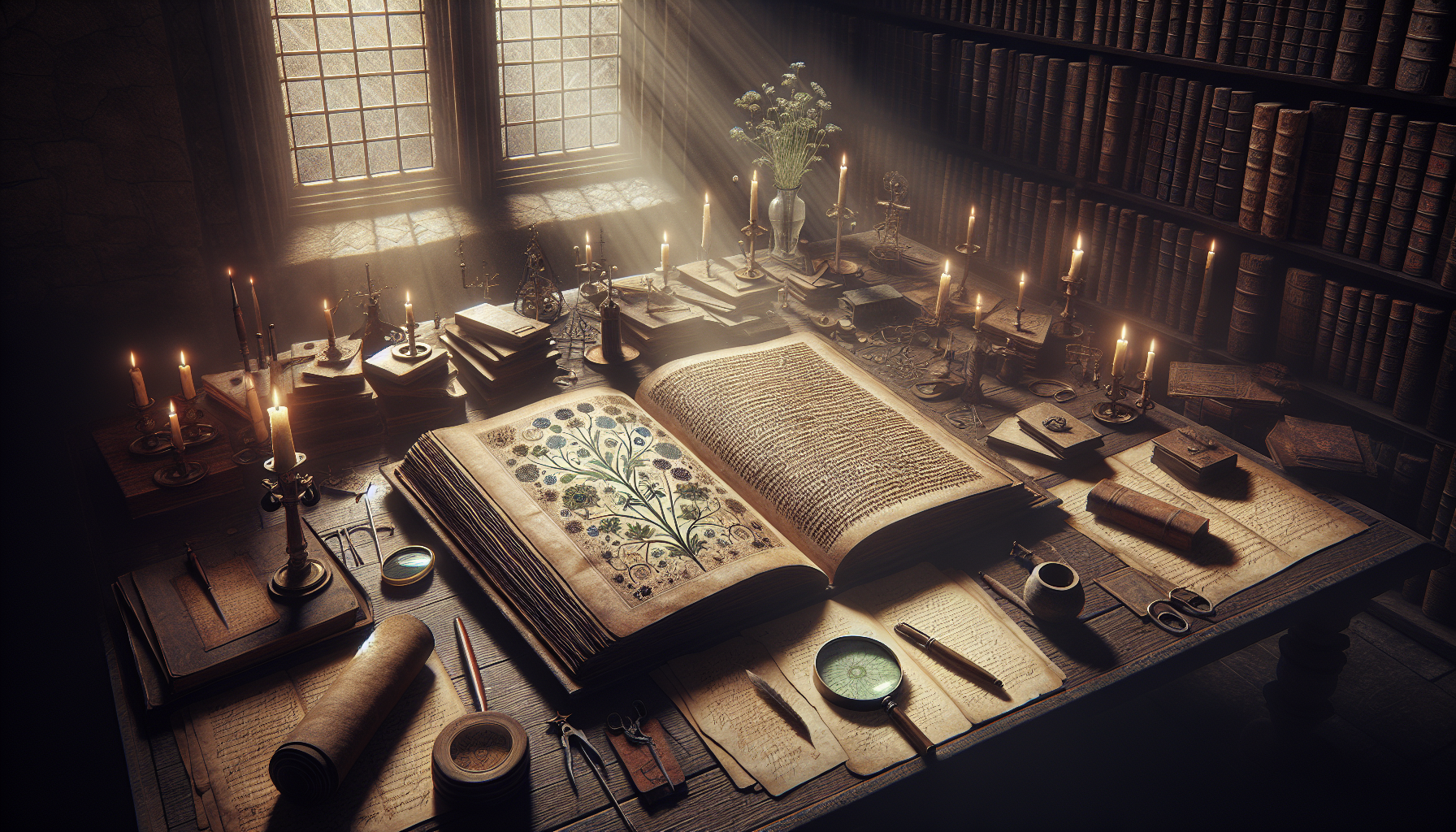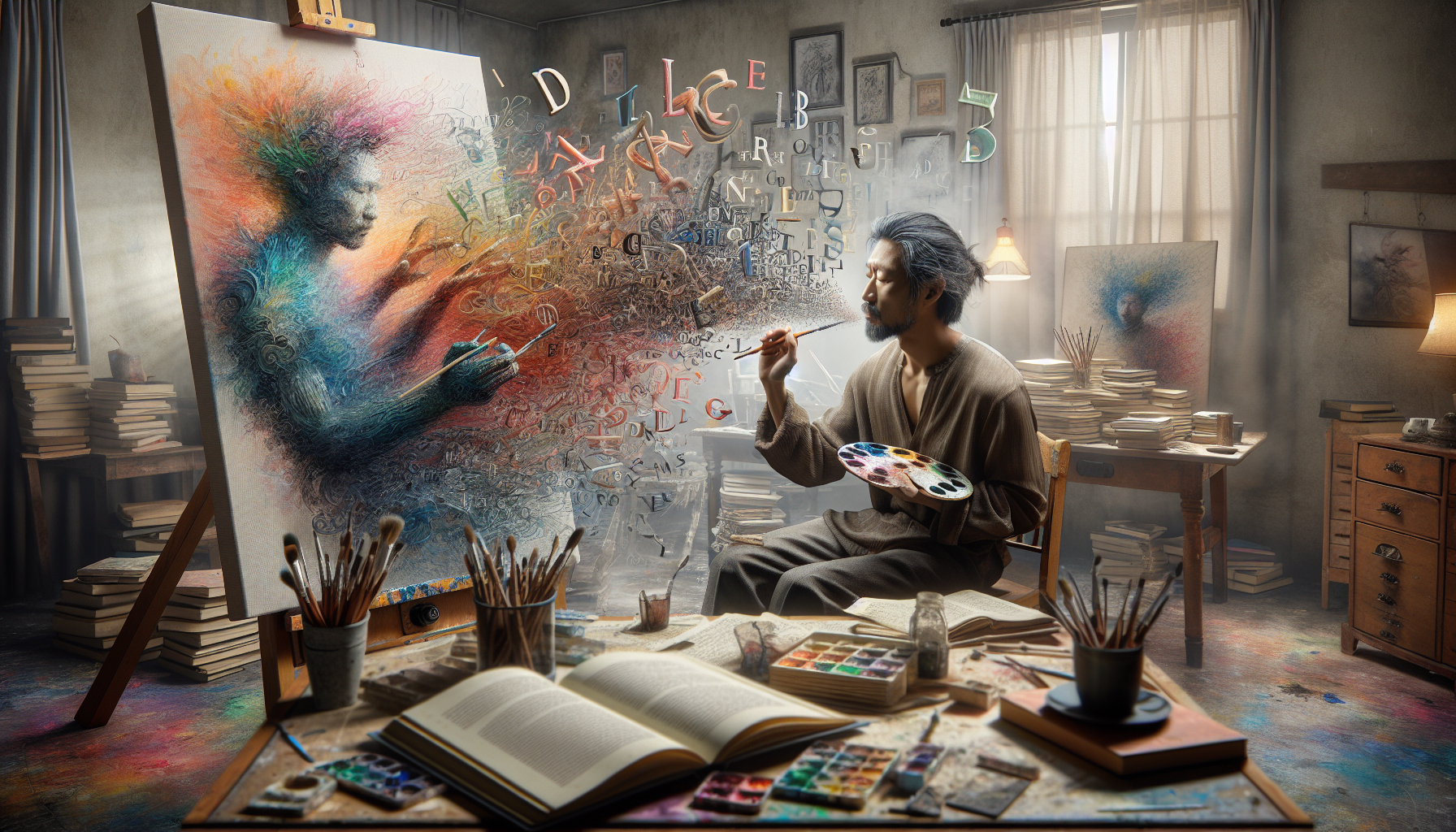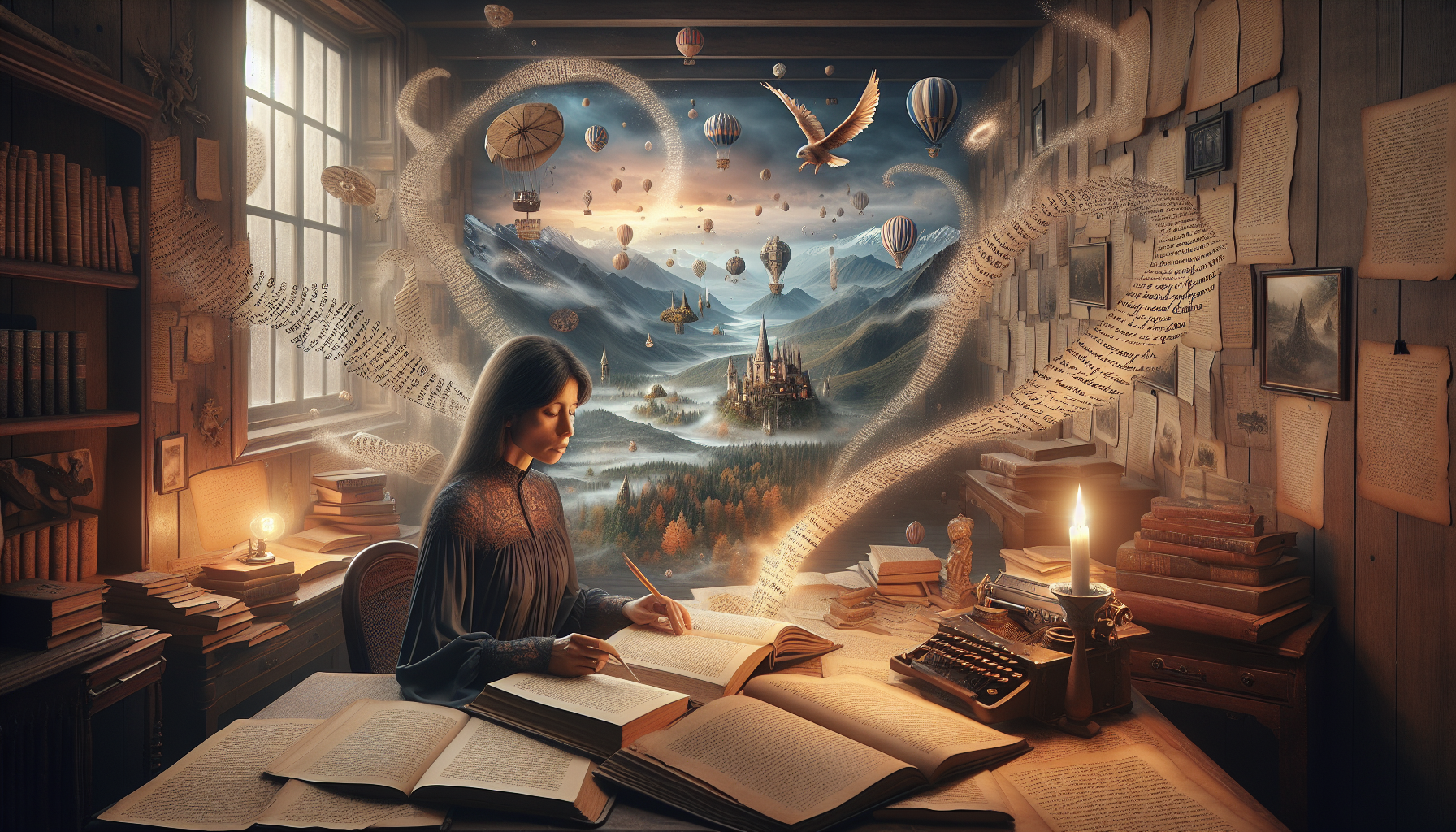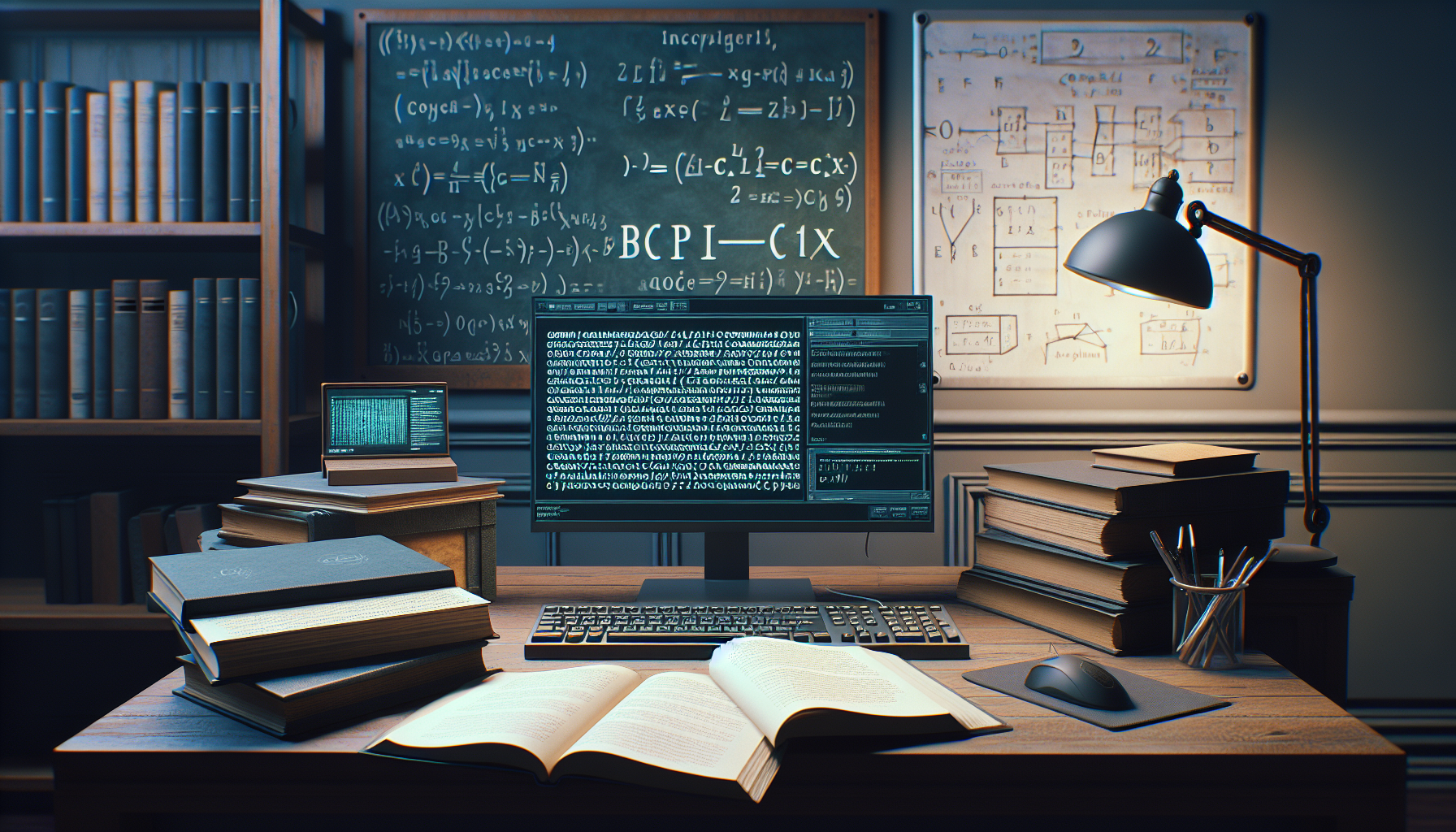In the realm of historical mysteries, few artifacts have captured the imagination and curiosity of scholars, cryptographers, and enthusiasts quite like the Voynich Manuscript. Nestled within the archives of Yale University’s Beinecke Rare Book & Manuscript Library, this enigmatic codex, with its undeciphered script and otherworldly illustrations, continues to baffle and intrigue over a century after its discovery. But what is it about this manuscript that draws us into its puzzling embrace, challenging our intellect and daring us to unlock its secrets? 📜🧐
The allure of the Voynich Manuscript lies not only in its cryptic text but also in its vivid illustrations that defy easy interpretation. From fantastical plants that exist nowhere in the botanical lexicon to astrological charts that hint at forgotten cosmic beliefs, each page turns the familiar into the phantasmagorical. As we delve into this article, we will embark on a journey through history, linguistics, art, and science, exploring the various hypotheses that have emerged over time. Is it a medieval medical journal, a work of pure imagination, or perhaps a complex cipher concealing lost knowledge? Theories abound, yet none have been conclusively proven, leaving room for endless speculation and wonder.
Join us as we unravel this enigma, starting with the manuscript’s mysterious origins and provenance, moving through the myriad attempts at decryption, and examining the cutting-edge technologies that offer new hope for cracking its code. We will meet the cast of characters who have devoted their lives to this quest, from amateur sleuths to renowned academics, each contributing a piece to this perplexing puzzle. As we navigate the labyrinthine corridors of this mystery, we invite you to ponder the nature of human curiosity and the enduring allure of the unknown. Together, let us explore the Voynich Manuscript—a riddle wrapped in a mystery inside an enigma—and perhaps, inch closer to the revelations that lie hidden within its pages. 🔍✨
Introduction to the Voynich Manuscript
The Voynich Manuscript stands as one of the most intriguing puzzles in the world of historical literature. Discovered in 1912 by Wilfrid Voynich, this mysterious codex has baffled scholars, cryptographers, and linguists for over a century. The manuscript, composed of approximately 240 pages, is written in an unknown script, accompanied by colorful and enigmatic illustrations of plants, astronomical diagrams, and figures engaged in cryptic activities. This manuscript continues to defy conventional understanding and invites us to delve deeper into its secrets. 🌿🔍
The origins of the Voynich Manuscript remain shrouded in mystery. Carbon dating suggests that the parchment was created in the early 15th century, yet its language, known as “Voynichese,” remains undeciphered. Various theories about its purpose and authorship abound, ranging from it being an elaborate hoax to a genuine treatise on medicinal herbs or an astrological guide. Regardless of its intended use, the manuscript captivates the imagination of both academic researchers and amateur enthusiasts alike.
The Historical Context of the Voynich Manuscript
Understanding the historical context of the Voynich Manuscript is essential to appreciating its enigma. The manuscript is believed to have been created during a period of intellectual blossoming in Europe, often referred to as the Renaissance. This era, which spanned from the 14th to the 17th century, was marked by a renewed interest in science, art, and literature. It was a time when knowledge was being rediscovered, preserved, and expanded, setting the stage for monumental shifts in European thought and culture.
The manuscript’s journey to modern times is as mysterious as its content. Wilfrid Voynich, a Polish book dealer, stumbled upon it in 1912 at the Villa Mondragone in Italy. Despite extensive research and analysis, the manuscript’s previous owners remain largely speculative, with notable figures such as Emperor Rudolf II of the Holy Roman Empire and the alchemist John Dee being suggested as potential custodians. These figures, both known for their interest in esoterica, add layers of intrigue to the manuscript’s already mysterious narrative.
Decoding the Indecipherable: The Language of the Manuscript
The language of the Voynich Manuscript, often referred to as “Voynichese,” presents a perplexing puzzle. Written in a script that does not match any known language or code, it has resisted numerous attempts at decryption by some of the world’s most talented cryptographers and linguists. The characters are distinct and unique, comprising an alphabet of roughly 20-30 letters, with a consistent syntax and structure that suggests an underlying linguistic logic. Despite this, the meaning of the text remains elusive.
Several theories have been proposed to explain the nature of Voynichese. Some researchers speculate that it could be an invented language, perhaps used to encode secret knowledge or communicate with a select group of individuals. Others suggest that it might be a cipher or code, designed to obscure the true content from uninitiated readers. More fringe theories propose that the language could be the work of an outsider or an extraterrestrial, though these ideas are often dismissed by serious scholars.
The Illustrations: A Visual Enigma
The illustrations in the Voynich Manuscript are as puzzling as the text itself, offering a tantalizing glimpse into the manuscript’s possible contents. These drawings are divided into several sections, each with its own thematic focus, including botanical, astronomical, biological, and pharmacological illustrations. The depictions are vibrant and detailed, yet they defy straightforward interpretation, often straddling the line between reality and imagination.
In the botanical section, numerous plants are depicted, many of which do not correspond to any known species. These illustrations are accompanied by textual descriptions, presumably detailing their uses and properties. However, the lack of identifiable species leads some to speculate that the plants may be symbolic or entirely fictional, serving purposes beyond mere botanical documentation. This raises questions about the manuscript’s intended audience and its potential use as a guide to secret or lost knowledge.
Biological and Pharmacological Mysteries
The biological illustrations within the manuscript are perhaps the most enigmatic, depicting human figures engaged in various activities, often intertwined with intricate tubing and other symbolic elements. These figures, mostly female, are shown in strange, almost ritualistic poses, which some scholars interpret as metaphors for alchemical or biological processes. The purpose of these illustrations is a matter of debate, with some suggesting they represent a form of medicinal or therapeutic practice, while others see them as symbolic or allegorical.
In addition to the biological depictions, the pharmacological section features drawings of containers, possibly intended to hold medicinal concoctions or substances. This section, like the others, is accompanied by text that remains undeciphered, making it impossible to confirm the exact nature of these substances. The presence of this section supports the hypothesis that the manuscript may have served as a medical or herbal guide, yet the lack of identifiable references continues to challenge this interpretation.
Theories and Speculations Surrounding the Voynich Manuscript
The enigmatic nature of the Voynich Manuscript has led to a plethora of theories and speculations, each attempting to explain its origin, purpose, and meaning. These theories range from the plausible to the outlandish, reflecting the manuscript’s ability to capture the imagination of those who encounter it.
One of the most popular theories suggests that the manuscript is an elaborate hoax, possibly created by a 16th-century prankster or a later forger seeking to profit from its sale. Proponents of this theory point to the manuscript’s undeciphered text and bizarre illustrations as evidence of its inauthenticity. However, the consistency of the script and the complexity of the illustrations argue against this, suggesting a more serious intent behind its creation.
The Alchemical Connection
Some scholars have speculated that the Voynich Manuscript is linked to alchemical practices, reflecting a synthesis of scientific, mystical, and symbolic knowledge. The biological and pharmacological sections, with their depictions of human figures and mysterious substances, lend credence to this theory. During the Renaissance, alchemy was considered both a scientific and spiritual pursuit, seeking to understand the hidden principles of the universe. The manuscript’s content and structure align with this dual purpose, suggesting a potential connection to alchemical traditions.
In addition to these theories, some have posited that the manuscript is an astrological or astronomical guide, designed to communicate celestial knowledge to a select audience. The presence of zodiac symbols and celestial diagrams supports this idea, though the exact nature of the information remains speculative. This theory aligns with the Renaissance fascination with the cosmos and the belief in the influence of celestial bodies on earthly affairs.
A Modern Perspective
In recent years, advances in technology have introduced new perspectives on the Voynich Manuscript. Computational linguistics and artificial intelligence offer promising avenues for deciphering its text, though success has been limited thus far. These tools have revealed patterns and structures within the text, suggesting a coherent language or code, yet the ultimate meaning remains elusive.
The enduring mystery of the Voynich Manuscript continues to captivate scholars and enthusiasts alike, inspiring a diverse range of interpretations and speculations. Its complexity and allure ensure that it remains a topic of fascination, inviting us to explore the boundaries of knowledge and understanding.
The Modern Quest: Technology and the Voynich Manuscript
In the digital age, the quest to unravel the mysteries of the Voynich Manuscript has taken on new dimensions. Modern technology offers innovative tools and methodologies, promising fresh insights into this age-old enigma. From advanced imaging techniques to complex algorithms, researchers are employing cutting-edge technology in their efforts to decode the manuscript’s secrets.
One of the most promising approaches involves the use of artificial intelligence and machine learning to analyze the text. These technologies can identify patterns and structures that are not immediately apparent to human eyes, offering new possibilities for deciphering the manuscript’s language. Algorithms are being trained to recognize the Voynichese script, analyze its frequency and distribution, and compare it to known languages. While these efforts have yet to produce a definitive breakthrough, they represent a significant advancement in the ongoing quest to decode the manuscript.
Collaborative Efforts and Open Access
The modern quest to understand the Voynich Manuscript is characterized by collaboration and open access. The manuscript has been digitized and made available online, allowing researchers and enthusiasts worldwide to study its pages. This open access has democratized the study of the manuscript, inviting diverse perspectives and expertise to contribute to its analysis. Collaborative projects bring together experts in cryptography, linguistics, history, and art, fostering a multidisciplinary approach to this complex puzzle.
In addition to academic efforts, the manuscript has captured the imagination of the public, inspiring amateur codebreakers and hobbyists to join the quest. Online forums and communities provide platforms for discussion and collaboration, where individuals can share their findings, theories, and insights. This collective effort underscores the universal appeal of the Voynich Manuscript, drawing people from all walks of life to engage with its mystery.
Continuing the Journey
Despite the advancements in technology and the collaborative efforts of researchers, the Voynich Manuscript remains an unsolved puzzle. Its undeciphered text and enigmatic illustrations continue to challenge our understanding, inviting us to explore the boundaries of knowledge and creativity. As technology evolves and new methodologies emerge, the quest to decode the manuscript will undoubtedly continue, driven by the enduring allure of its mystery.
The Voynich Manuscript stands as a testament to the power of human curiosity and the desire to uncover hidden truths. Its pages offer a glimpse into the past, while its unresolved questions beckon us toward the future. In this ongoing journey of discovery, the manuscript serves as a reminder of the mysteries that remain, waiting to be revealed. 📜🔍

Conclusion
Concluding our exploration of the enigmatic Voynich Manuscript, we find ourselves standing at the intersection of history, linguistics, and mystery. The journey through this perplexing manuscript has allowed us to delve deep into the realms of unsolved codes, medieval history, and the eternal quest for knowledge. As we recapitulate the main points discussed, it becomes clear that the Voynich Manuscript is not just a document of mystery but a testament to human curiosity and the relentless pursuit of understanding the unknown.
Throughout this article, we embarked on a journey that first acquainted us with the manuscript’s discovery and its journey through various hands and institutions. From its enigmatic illustrations to its undeciphered script, the manuscript has captivated the minds of scholars, cryptographers, and enthusiasts alike. The theories surrounding its origins, whether as a coded alchemical text, a medieval herbal, or even a clever hoax, highlight the diverse interpretations that this document has inspired over the centuries.
We also delved into the various attempts at decoding the manuscript, from early efforts in the 20th century to the application of modern cryptographic techniques and AI analysis. Despite these efforts, the manuscript continues to withhold its secrets, maintaining its status as one of the world’s greatest literary enigmas. The technological advancements of the digital age have certainly brought us closer to understanding the manuscript’s structure and potential content, yet the key to its full comprehension remains elusive.
The cultural and historical context surrounding the Voynich Manuscript also provides a fascinating backdrop to our discussion. Situated in the rich tapestry of the medieval and Renaissance periods, the manuscript reflects the era’s interplay of science, art, and mysticism. Its botanical illustrations, astrological diagrams, and mysterious bathing scenes offer a glimpse into the medieval worldview, one that is both familiar and foreign to us today.
In reinforcing the importance of the Voynich Manuscript, we are reminded of the broader implications of its study. This document challenges our understanding of language, communication, and the preservation of knowledge. It stands as a symbol of the puzzles that history occasionally presents us, urging us to persist in our efforts to unravel them. The manuscript’s allure lies not only in its mystery but also in the inspiration it provides to those who seek to decode the unknown, reflecting the timeless human drive to push the boundaries of knowledge.
As we conclude, it is important to emphasize the collaborative spirit that the study of the Voynich Manuscript has fostered among scholars across disciplines. This endeavor serves as a reminder of the power of interdisciplinary collaboration, where historians, linguists, scientists, and amateur cryptographers come together, each bringing their unique perspectives to the table.
Inspiration from the Voynich Manuscript extends beyond academic circles. It encourages us all to embrace the mysteries in our own lives, to approach the unknown with curiosity and determination. As we ponder its secrets, let us be inspired to explore the puzzles we encounter daily, whether they pertain to personal growth, professional challenges, or broader societal issues.
We invite you, dear reader, to engage with the mysteries of the Voynich Manuscript and beyond. Share your thoughts, theories, or questions about this captivating document. Engage with fellow enthusiasts, scholars, or friends, and let the discussion about this historical enigma continue to flourish. Consider exploring further resources, such as the Yale University’s Beinecke Rare Book & Manuscript Library, where the manuscript resides, or delve into cryptographic studies that might offer new insights into its secrets.
In closing, the Voynich Manuscript remains a beacon for those intrigued by the mysteries of our past. Its pages may be silent, but they speak volumes about the enduring quest for knowledge. Let us continue to explore, question, and learn, inspired by the enigma that is the Voynich Manuscript. 📜🔍
Toni Santos is a visual cryptographer and artisan, weaving hidden meaning into every line, curve, and composition. His creations delve into the mysterious world of secret codes, symbolic alphabets, and invented languages, transforming visual art into a rich tapestry of communication beyond words.
Guided by a lifelong fascination with hidden knowledge and the power of symbols, Toni explores how meaning can be embedded, concealed, and rediscovered. From constructed glyphs to encoded illustrations, each piece he creates serves as a portal to a deeper layer of understanding — one that invites curiosity, interpretation, and wonder. His work bridges the intuitive with the intellectual, the mystical with the methodical.
With roots in handcrafted artistry and a background in visual semiotics, Toni fuses form and function to create works that whisper rather than shout. These are not just images — they are visual riddles, poetic encryptions, and artifacts of a language yet to be spoken.
As the creative mind behind Vizovex, Toni offers a space where art meets encryption, and viewers are invited to decode, reflect, and engage. Through symbolic design, visual lexicons, and explorations into constructed languages, he builds a universe where meaning is layered, intentional, and always slightly out of reach — waiting to be discovered.
His work is a tribute to:
The unseen languages that shape our perception
The art of hidden messages and symbolic systems
The thrill of decoding and the beauty of mystery
Whether you’re a language lover, a codebreaker at heart, or someone drawn to the enigmatic, Toni invites you to explore a world where expression transcends convention — one glyph, one message, one mystery at a time.





